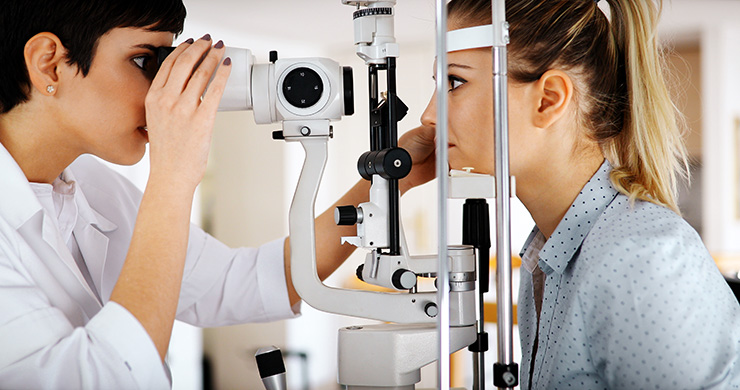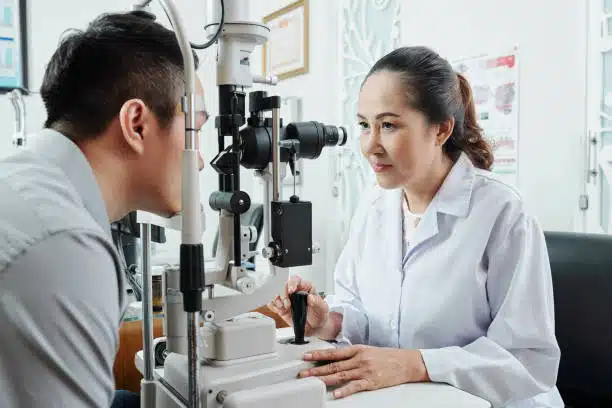How an Eye Doctor Can Transform Your Vision Health in Chino
Checking Out the most recent Technical Improvements in Optometry and What They Mean for Optometrists
From the accuracy of Optical Coherence Tomography to the nuanced insights provided by AI-driven analysis devices, these innovations are setting brand-new criteria in client analysis and therapy. As these advancements permeate the practice, optometrists are faced with the difficulty of accepting these devices to improve person end results.
Innovations in Diagnostic Tools
Progressing the area of optometry, advancements in diagnostic devices have actually transformed the means eye treatment specialists examine and identify ocular problems and visual problems. The past decade has actually experienced significant technical improvements, allowing more thorough and precise assessments.
Another secret development is the intro of advanced corneal topography systems, which map the surface area curvature of the cornea with accuracy. These tools are especially beneficial for fitting call lenses and detecting corneal disorders. Electronic retinal imaging has actually transformed conventional ophthalmoscopy, providing in-depth, breathtaking sights of the retina that facilitate comprehensive visual assessments.
The growth of wavefront aberrometry has actually additionally been important, enabling the analysis of refractive errors with unrivaled accuracy (Opticore Optometry). This modern technology aids in tailoring rehabilitative lenses and boosting medical end results for refractive surgical procedures. Jointly, these analysis improvements equip optometrists to deliver exceptional client care, ensuring very early treatment and customized therapy methods, inevitably boosting aesthetic wellness outcomes
AI in Individual Administration
Structure on the structure of advanced analysis tools, the consolidation of artificial knowledge (AI) in person management stands for a transformative leap for optometry. AI systems are increasingly employed to enhance efficiency, precision, and customization in individual care. By evaluating substantial quantities of data, AI can identify patterns and forecast prospective ocular problems, making it possible for optometrists to customize treatments extra efficiently. This ability is critical in handling chronic eye illness such as glaucoma and diabetic retinopathy, where very early discovery and continual surveillance are key.
Moreover, AI-driven platforms help with structured patient interactions and administrative procedures. Automated organizing, online examinations, and personalized follow-up plans not only boost patient contentment however likewise maximize time management for specialists. These systems can triage patients based on the necessity of their problems, ensuring that those in critical need receive prompt attention.
In addition, AI boosts decision-making by offering eye doctors with evidence-based suggestions and therapy paths. By incorporating data from digital health and wellness documents, AI devices provide understandings that educate medical decisions, lowering the danger of errors and improving individual outcomes. As AI continues to develop, its function in client monitoring will likely increase, improving the landscape of optometric care.
Developments in Retinal Imaging
In the realm of optometry, retinal imaging has seen impressive technological improvements that are enhancing diagnostic capacities and person care. Innovations such as Optical Comprehensibility Tomography (OCT) and fundus photography have transformed how optometrists envision and assess the retina.
Improved imaging modalities like OCT angiography are further refining analysis accuracy. This non-invasive strategy maps blood circulation in the retina, providing crucial understandings into vascular health and wellness without the need for dye injections. In addition, flexible optics technology is being incorporated right into retinal imaging systems to deal with eye aberrations, delivering unmatched image quality. Such developments assist in the recognition of minute retinal changes that might signify condition development.
Furthermore, developments in artificial intelligence are boosting retinal imaging by enabling automatic evaluation of huge datasets. These systems help eye doctors in identifying patterns indicative of pathology, consequently boosting diagnostic accuracy and efficiency. Collectively, these advancements are changing retinal imaging into a cornerstone of contemporary eye care, boosting results and broadening restorative opportunities.
Teleoptometry's Growing Duty
Teleoptometry is increasingly ending up being a vital part of eye treatment, browse around here driven by improvements in data and diagnostic devices. As optometry accepts digital transformation, teleoptometry promotes remote consultations, allowing eye doctors to expand their services past traditional boundaries. This is especially useful in country and underserved areas where accessibility to specialized eye treatment is often limited. By leveraging high-resolution video clip conferencing and advanced retinal imaging, optometrists can perform thorough eye examinations from afar, making sure prompt diagnosis and treatment.
The assimilation of expert system (AI) further boosts teleoptometry, enabling the evaluation of aesthetic information and assisting in the discovery of eye conditions such as glaucoma and diabetic person retinopathy. AI-powered algorithms can swiftly translate complicated imaging data, offering optometrists with useful understandings that strengthen scientific decision-making.
In addition, teleoptometry supports continuity of care with seamless assimilation with digital health documents (EHRs), allowing optometrists to preserve extensive individual backgrounds. This makes sure that patients obtain personalized and constant treatment even when speaking with various experts.
Despite these advantages, difficulties continue to be, including making sure information safety and handling client assumptions. Teleoptometry stands for a substantial stride towards even more obtainable, reliable, and patient-centered eye treatment. As technology develops, its duty is poised to increase additionally.

Future Patterns in Eye Treatment
A myriad of cutting-edge fads is set to improve the future of eye treatment, driven by technical developments and the advancing demands of clients. One considerable pattern is the combination of expert system (AI) in diagnostics, which promises to improve the accuracy and performance of eye examinations. AI formulas can assess vast amounts of information from retinal photos, potentially finding conditions like diabetic person retinopathy and glaucoma earlier than standard techniques.
Additionally, personalized medication is obtaining traction in optometry, with genetic testing informing tailored therapy strategies. This approach aims to maximize individual end results by customizing treatments to individual hereditary profiles. Wearable innovation, such as wise get in touch with lenses, is likewise imminent, providing real-time tracking of intraocular pressure or glucose degrees, thus offering continuous insights into systemic and ocular health.
The fostering of enhanced fact (AR) and digital truth (VR) in training and person education and learning is an additional arising trend. These innovations offer immersive experiences that can improve visit here understanding and abilities both for eye doctors and clients. As these trends progress, optometrists need to stay abreast of technological advancements to give cutting-edge treatment, making sure improved client end results and complete satisfaction in the dynamic landscape of eye treatment.
Conclusion

Jointly, these analysis improvements empower optometrists to supply remarkable person treatment, ensuring very early treatment and tailored therapy approaches, eventually improving aesthetic health results.

As these technologies continue to advance, eye doctors have to adjust and integrate them into technique, inevitably optimizing operations effectiveness and elevating the criterion of eye treatment delivered to clients.